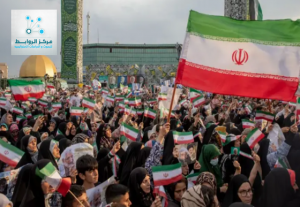Translated by Shatha Kalel
On the morning of Friday, June 28, 2024, Iranians will cast their votes to choose a new president following the death of President Ebrahim Raisi in a helicopter crash on May 19, 2024. This election comes amidst numerous political, economic, and social crises facing Iranian society, with the Iranian leadership striving to find fundamental solutions to overcome or address these issues. All presidential candidates have included a primary focus in their electoral programs on addressing the political handling of lifting economic sanctions and the relationship with the United States and Western Europe, making it a central issue in their campaigns. This comes at a time when measures have escalated to tighten sanctions on the Iranian regime due to its growing relationship with Russia, its stance on the war in Ukraine, its continued supply of missiles and drones to Russia, and human rights violations through the repressive methods employed by the regime’s security and intelligence agencies in response to popular protests that erupted in mid-September 2022 following the death of Kurdish woman Mahsa Amini.
Candidates’ views on the relationship with the West and the U.S. administration vary. The reformist candidate Masoud Bazeshikan has called for constructive relations with the United States and European countries, seeking genuine tools to bring Iran out of its international isolation, accompanied on his campaign tours by Mohammad Javad Zarif in his first public political activity in support of the reformist movement, of which he is an important part. Meanwhile, the conservative candidates Mohammad Bagher Ghalibaf and Saeed Jalili share similar views on strengthening relations with Russia and China, forming defensive alliances, and engaging in trade exchanges with them, while also fostering closer ties with Arab countries, especially the Gulf states, and leveraging agreements signed with Saudi Arabia in March 2023. They advocate for a confrontational policy, increasing nuclear capabilities, and enhancing the effectiveness of Iran’s nuclear program, considering it a basis for any future rounds of negotiations to establish a new agreement on ending the nuclear file.
All candidates adhere to the principles previously emphasized by Supreme Leader Ali Khamenei, which include not compromising on the gains and benefits Iran has achieved in strengthening its regional and international position. This involves maintaining the grip of the regime and the continuity of Iran’s political project in the Middle East and the Arab world. The election results are expected to align with these political goals and be consistent with them. Everyone acknowledges that setting these behaviors in the general Iranian scene falls within the jurisdiction of the Supreme Leader, who dominates state affairs internally and externally and holds actual authority over military and security leaderships and media channels. Therefore, the leadership in Iran aims for the next president to be similar to Ebrahim Raisi in managing state affairs and implementing what Khamenei desires and seeks. This means there will be no new political changes but rather a precise commitment to political stability, preserving the Iranian regime, and maintaining political behavior in handling foreign issues as dictated by the Supreme Leader in negotiations over the nuclear program, lifting U.S. sanctions, releasing frozen funds, and determining Iran’s stance on developments in Palestinian territories.
These main principles require the next Iranian president to be from the regime’s loyalists, capable of implementing field solutions to address any changes on the Iranian scene and confronting them if popular opposition intensifies and public demonstrations demanding better living conditions continue. If the next president cannot find solutions to the crises faced by Iranian citizens, the issue of determining Supreme Leader Ali Khamenei’s succession will be postponed until months after the election results or the political changes in the region.
The Supreme Leader’s most important interim goal is active participation in the elections, where all Iranian citizens aged 18 and above are eligible to vote. This means that over 61 million out of Iran’s population of more than 85 million are eligible to cast their votes. The regime aims to have an acceptable number of citizens go to the polling stations, aiming for a 60% participation rate compared to the low turnout in the previous election when Ebrahim Raisi was chosen. Therefore, the Guardian Council has selected a reformist figure, Masoud Bazeshikan, as a candidate, attempting, under the direction of the Iranian leadership, to boost public participation in the elections, calm internal situations, and direct goals to achieve smooth participation, preserve the legitimacy of the regime, and maintain the regime’s policy under the control of Ali Khamenei. This is the practical and field policy that the Iranian regime has characterized over several decades, adhering to the principle of “present pragmatism.”
Economic Studies Unit / North America Office
Rawabet Center for Research and Strategic Studies

